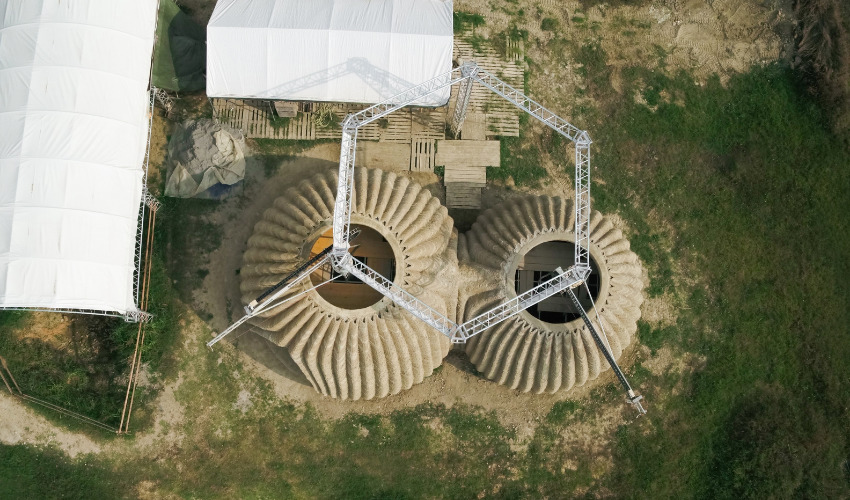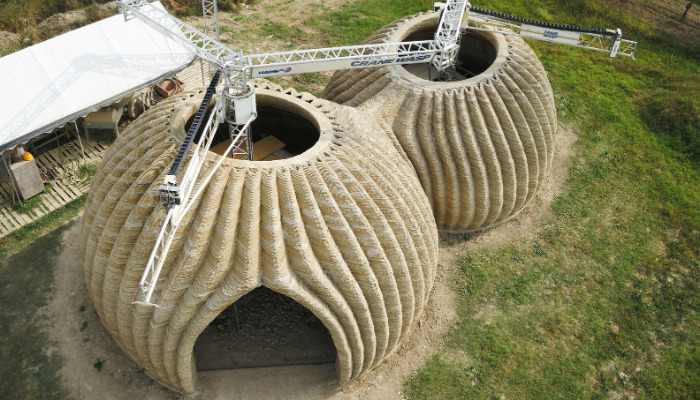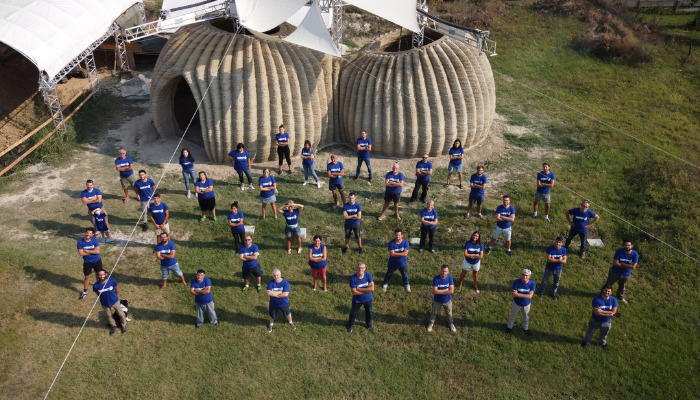WASP completes the structure of its 3D printed eco-habitat

WASP (World’s Advanced Saving Project), an Italian 3D printing company working especially in the realm of sustainable construction, has completed the printing phase of the TECLA supporting structure, the first 3D printed eco-habitat. The TECLA project was launched in 2019 with Mario Cucinella Architects with the goal of creating a new circular housing model, one that was entirely reusable with recyclable materials taken from the local terrain. With the completion of their printing stage, TECLA represents a new stage of more sustainable construction, one that is hoped to provide a solution to a growing need not just for housing in a world with an ever-increasing population that is eco-friendly in order to also address the climate crisis.
TECLA (a portmanteau of technology and clay) was made in Massa Lombarda (Ravenna, Italy) using the Crane WASP (WASP’s new 3D printer for the construction sector). According to the press release, it represents a new circular model of housing entirely created with reusable and recyclable materials, sourced from local soil, carbon-neutral and adaptable to any climate and context. It was printed using multiple WASP printers at the same time, the first time that two printing arms were synchronized as part of a construction project. This enabled the team to finish the project faster while avoiding collisions. According to WASP, the TECLA can be synthesized in about 200 hours of printing, or about 8 days. However what is especially notable about this 3D printed building is its use of material, raw earth.

A side view of TECLA showing its distinctive shape (photo credits: WASP)
TECLA’s Contribution to Sustainability and 3D Printing Construction
Though 3D printing is not new to the construction industry, most buildings are printed using ready mix mortars though some have been completed using real concrete. Though much more stable, this poses a problem from an environmental and sustainability perspective. In general, additive manufacturing has the potential to be much more environmentally friendly than traditional manufacturing methods. This is due to its potential for local production (the reason 3D printing was a timely and effective response at the beginning of the pandemic) and because it can allow for zero-waste manufacturing, a significant departure from traditional manufacturing which results in more waste. However, concrete has a large carbon footprint, and its use in building could be considered to negate many of the other environmental benefits of using additive manufacturing.
In the case of TECLA, this problem is eliminated. The use of soil is significant as it is significantly more eco-friendly, as well as faster (since the soil is already at the build site), allowing the true benefits of 3D printing in sustainable construction to shine through. As Massimo Moretti, Founder of WASP, explains “We build 3D printed houses using earth found on the spot, using a sustainable perspective. The oldest material and the art technology merge to give new hope to the world.” This 3D printed eco-habit can be considered carbon neutral due to the use of local, sustainable materials (the soil), potentially laying the stage for future innovations in the field of sustainable construction.

The shape of the building is also notable. Inspired by the potter wasp and its unique nest, the double dome shape was able to fulfill the roles of structure, roof and external cladding all at the same time, making the house extremely high-performance. Discussing the completion of the printing phase, Mario Cucinella, Founder of Mario Cucinella Architects and SOS – School of Sustainability stated, “The completion of the structure is an important milestone and shows that, thanks to the design and technologies used, TECLA is no longer just a theoretical idea but can be a real and achievable response to the needs to living today and the future, that can be directed in different contexts and latitudes.”
The first installation of TECLA and its presentation is scheduled for Spring 2021. You can find out more information WASP at their website HERE.
Check out the video showing the printing process below:
What do you think about these sustainable 3D printed habitats? Let us know in a comment below or on our Facebook and Twitter pages! Sign up for our free weekly Newsletter here, the latest 3D printing news straight to your inbox!
*thumbnail photo credits: WASP






